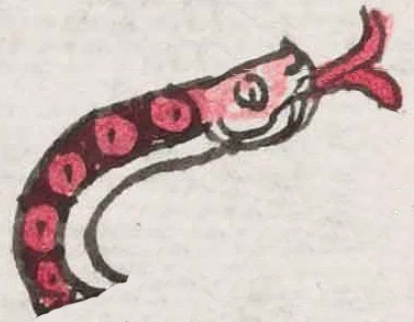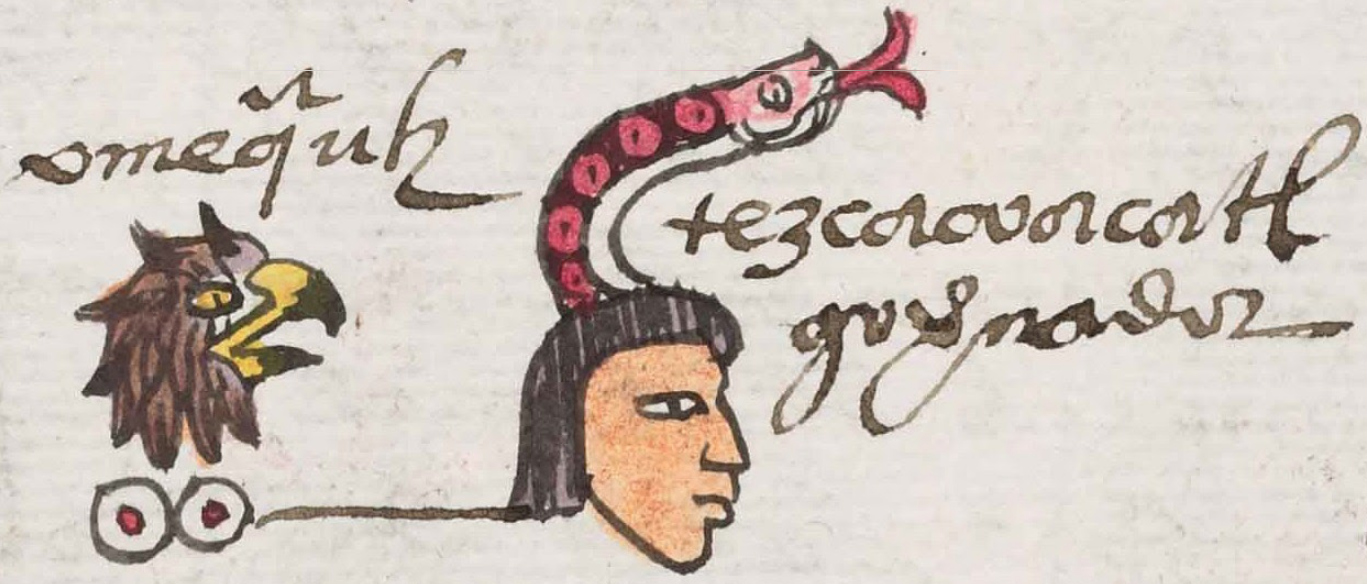Tezcacoacatl (Mdz18r)
This compound glyph for the title Tezcacoacatl merges two elements, a mirror (tezcatl), which is repeated five times, and a snake or serpent (coatl). Thus, the serpent has five mirrors along the part of its body that shows (the upper half). These mirrors are filled with red and a black dot in the middle. Surrounding the circles is a black skin. The belly of the snake is white. Its head is a mottled pink and white color. It is shown in profile, looking to the viewer's right. Its eye is open. Its red tongue is bifurcated.
Stephanie Wood
From the contextual/historical image, one can see that the title glyph is attached to a man's head. His name glyph is farther to the left, Ome Cuauh (or Cuauhtli, eagle). For another example of a serpent with circles on its skin, such as Tezcacoacatl has, see the example of one of the names Itzcoa from the Matrícula de Huexotzinco, below.
Stephanie Wood
tezcacoacatl
govnador
Tezcacoacatl
gobernador
Stephanie Wood
c. 1541, but by 1553 at the latest
snakes, serpents, serpientes, mirrors, espejos, cohuatl

coatl, serpent, https://nahuatl.wired-humanities.org/content/coatl
tezca(tl), mirror, https://nahuatl.wired-humanities.org/content/tezcatl
Codex Mendoza, folio 18 recto, https://digital.bodleian.ox.ac.uk/objects/2fea788e-2aa2-4f08-b6d9-648c00..., image 46 of 188.
Original manuscript is held by the Bodleian Libraries, University of Oxford, MS. Arch. Selden. A. 1; used here with the UK Creative Commons, “Attribution-NonCommercial-ShareAlike 3.0 License” (CC-BY-NC-SA 3.0)







